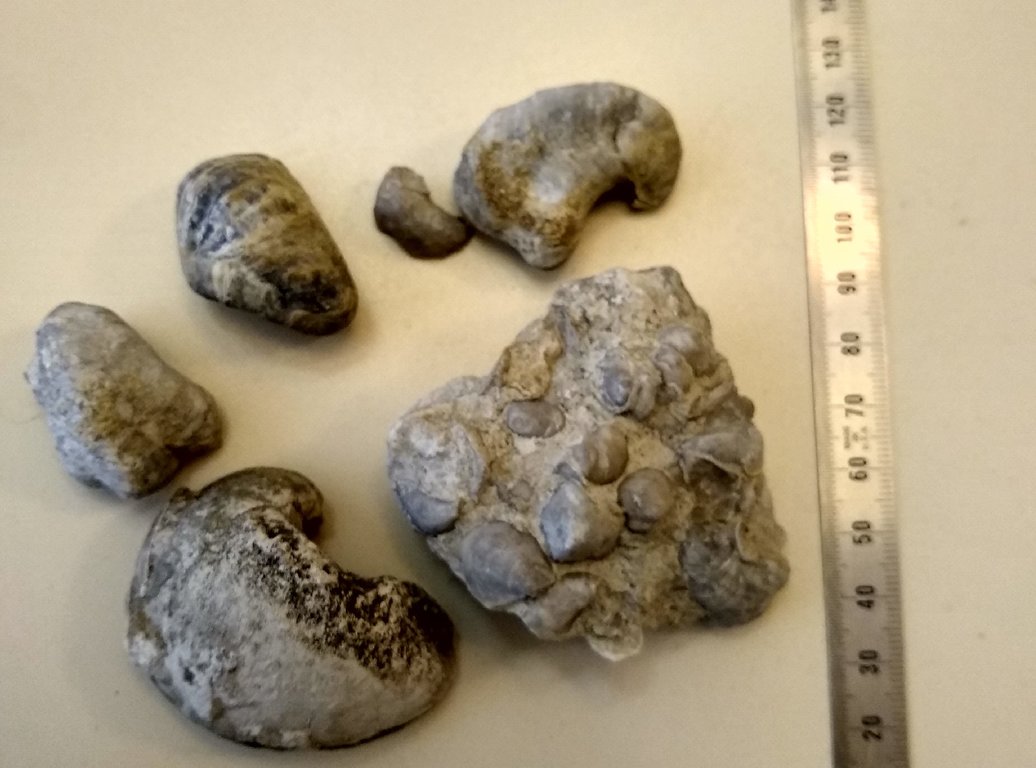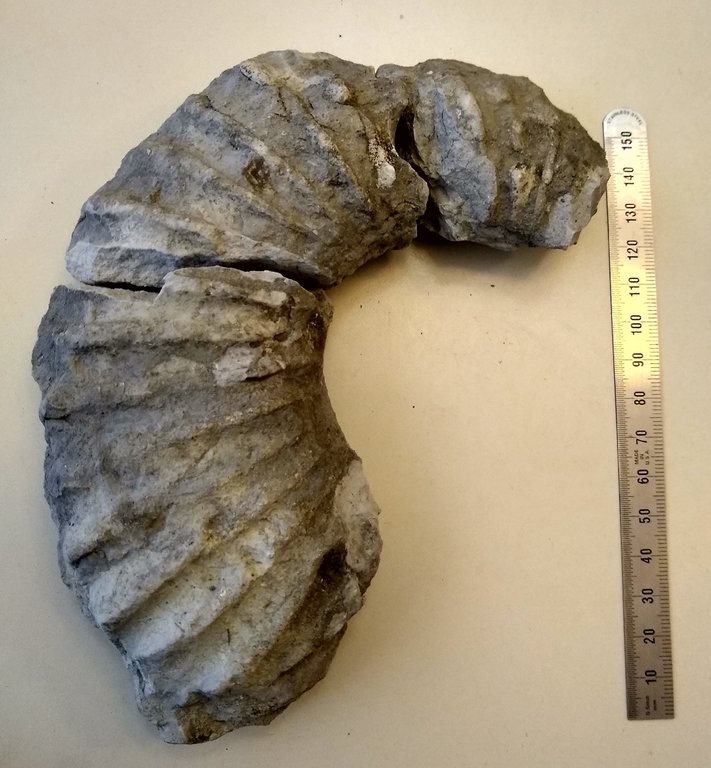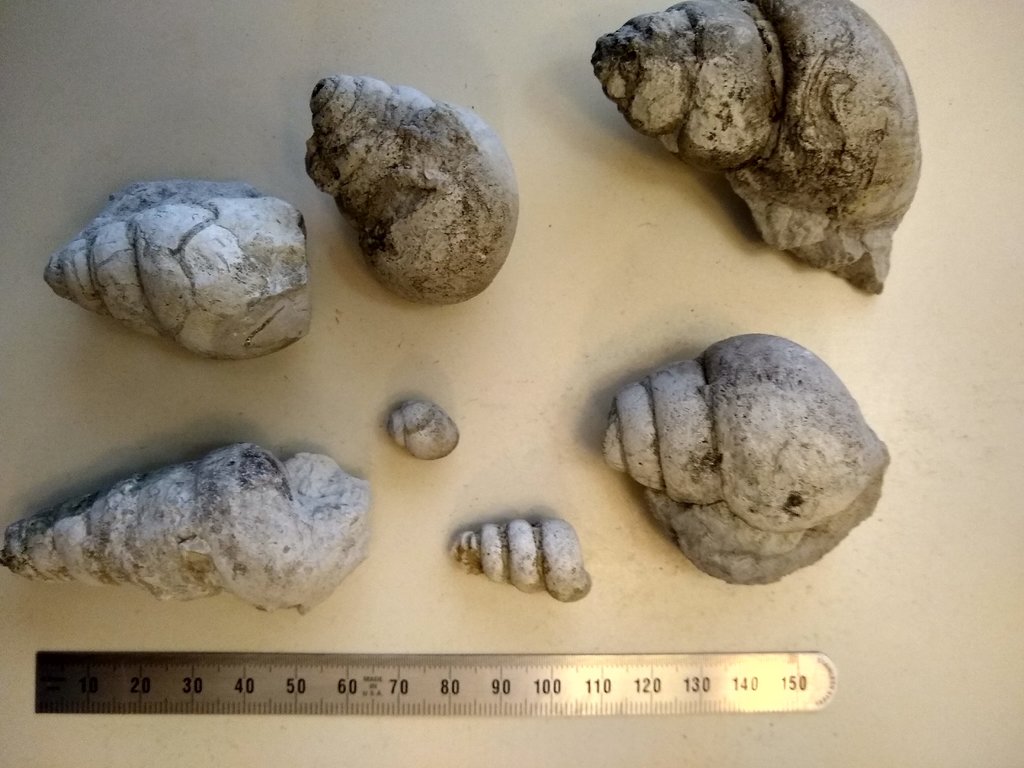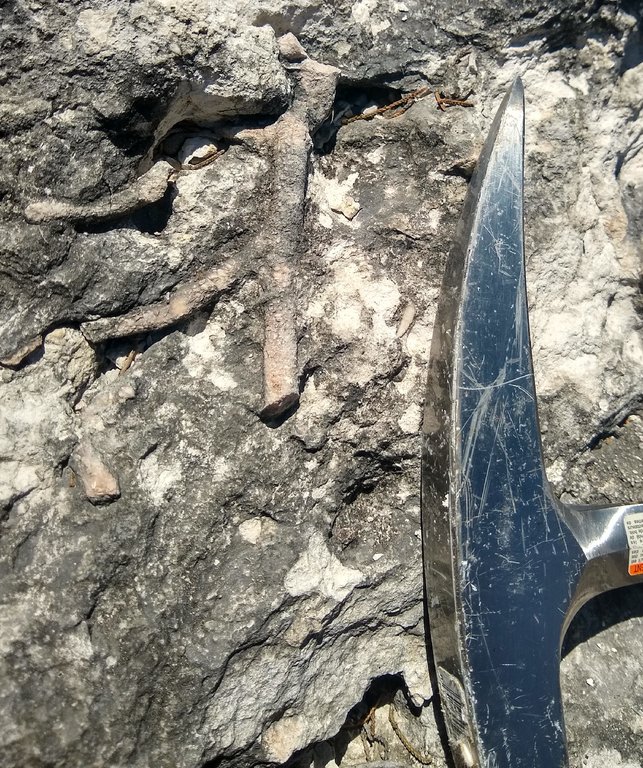I am working again these days, but on Wednesday, I got off early enough that I made a trip to a creek in northern Hill County. Its limestone walls are full of fossils, but the limestone is very hard. It is obvious that I need to get better at chiseling fossils out of limestone. I could get lots of practice in this creek. Macrostrat shows the area where I was as being right on the border of the Fredericksburg and Washita Groups.
The first thing I noticed about this creek was how many Gryphaea (devil’s toenail) oysters there were. Most are pretty small, but they are everywhere. There are more of them in the creek than all other fossils combined, including lots of limestone pieces just full of small ones like the one in this photo. Click the photos to be able to zoom in and get a closer look.

Getting a large ammonite out of the limestone in this creek is really tough. I may need to bring a bigger hammer next time.

This ammonite fragment was one of the few fossils I found that was loose, not embedded in the limestone. As straight as the fragment is, I’m thinking it must be from a heteromorphic ammonite. I wish I could have found the rest of it. I notice that some of the rock in it is the gray limestone the creek walls are full of, but some of the inside of it more closely matches the tan loose rocks that were everywhere between the topsoil and the gray limestone. It made me wonder if it came from where these two different rock layers meet.

And of course I picked up some gastropods, most with varying amounts of limestone attached. I figure when I get around to trying to use a dremel or air scribe to remove limestone from fossils, these will be good practice pieces.

There were fossilized burrows like these all over the place in the limestone in this creek. I thought they looked really cool.


